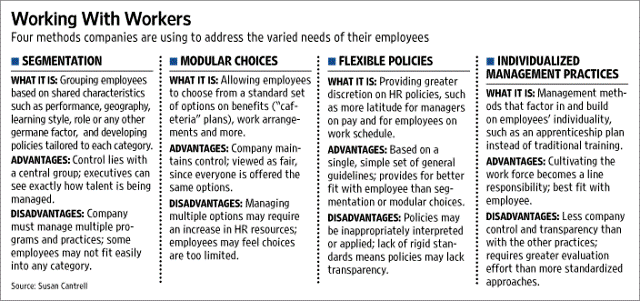As organizations grow they face the challenge of attracting and retaining top talent. Talent strategies may work fine when the organization is small and has the space to offer challenging and fast growing opportunities. It becomes difficult to sustain the organizational growth and continue to offer the same kind of challenge and career growth for talents.WSJ reports how the Google is also facing this challenge of attracting and retaining top talent.
Google had more than six times the number of workers at the end of the first quarter than it had at the same point in 2004, which some former employees say tends to slow decision-making and make it harder for individuals to feel like they're having an impact.
Google stock option are beginning to finish vesting for thousands of employees brought on during a big Google hiring spree in 2003 and 2004, lessening the financial incentives to stay.
On top of all this, a new generation of Internet start-ups has matured enough to attract top technical talent and offer a real possibility of riches from a stock offering or sale to a bigger company. In contrast, Google's shares hit a record level this week, suggesting the stock simply doesn't offer the same potential gains it once did. The concentration of many of the start-ups within a few miles of Google's headquarters, which Google itself has exploited in the past, can make poaching staff a faster and easier pursuit.
Still, Mr. Bock says Google executives spend a lot of time thinking about how to attract and retain top talent as the company grows in size. "We don't want to become a victim of our own success; we're aware of that risk," he says.
The company acknowledges that creative and entrepreneurial people are the core of its success -- that's one reason Google lavishes them with extravagant free food and other perks. "If we do not succeed in attracting excellent personnel or retaining or motivating existing personnel, we may be unable to grow effectively," Google has acknowledged in regulatory
filings.
Best talent continues to aspire more as they achieve success and try to repeat the same experience at a faster and more ambitious pace. Organisations typically find it difficult to keep pace with the growing aspirations of its top talent and this is when the point at which companies needs to rethink the ways they plan to engage employees. As this article clearly outlines that when it comes to human resources, one size no longer fits all.
One set of rules dictated everything from the kinds of benefits and rewards the company offered to how employees were trained and evaluated. That approach made things easier for the human-resources department and ensured a degree of efficiency, equality and fairness. Now some executives are finding that this model isn't adequate for getting the most out of existing talent or attracting and keeping new people. To be competitive in the marketplace and in the race for talent, companies must understand and address the diverse needs of their work force. In fact, they must treat each employee as a "work force of one."Following this efforts are being made by HR folks to ensure more flexibility, create more opportunities for career growth ,allow individuals greater space in deciding and planning different career paths within the organization .

Sun Microsystems Inc. asks employees to identify the type of physical setting that suits them best -- a private office, team room, satellite center or their home office. Microsoft Corp. goes so far as to ask certain types of employees to design their own career paths. The company offers software engineers both a management-focused and technical-specialist career track and allows them to move back and forth between the two.Surely this indicates a marked shift in the way talent is being retained and developed in organizations. Career decisions are not just being made on the challenging role and compensation and ESOP’s being offered but how one gets the opportunity to plan his career and try different things in the same organization.
No comments:
Post a Comment